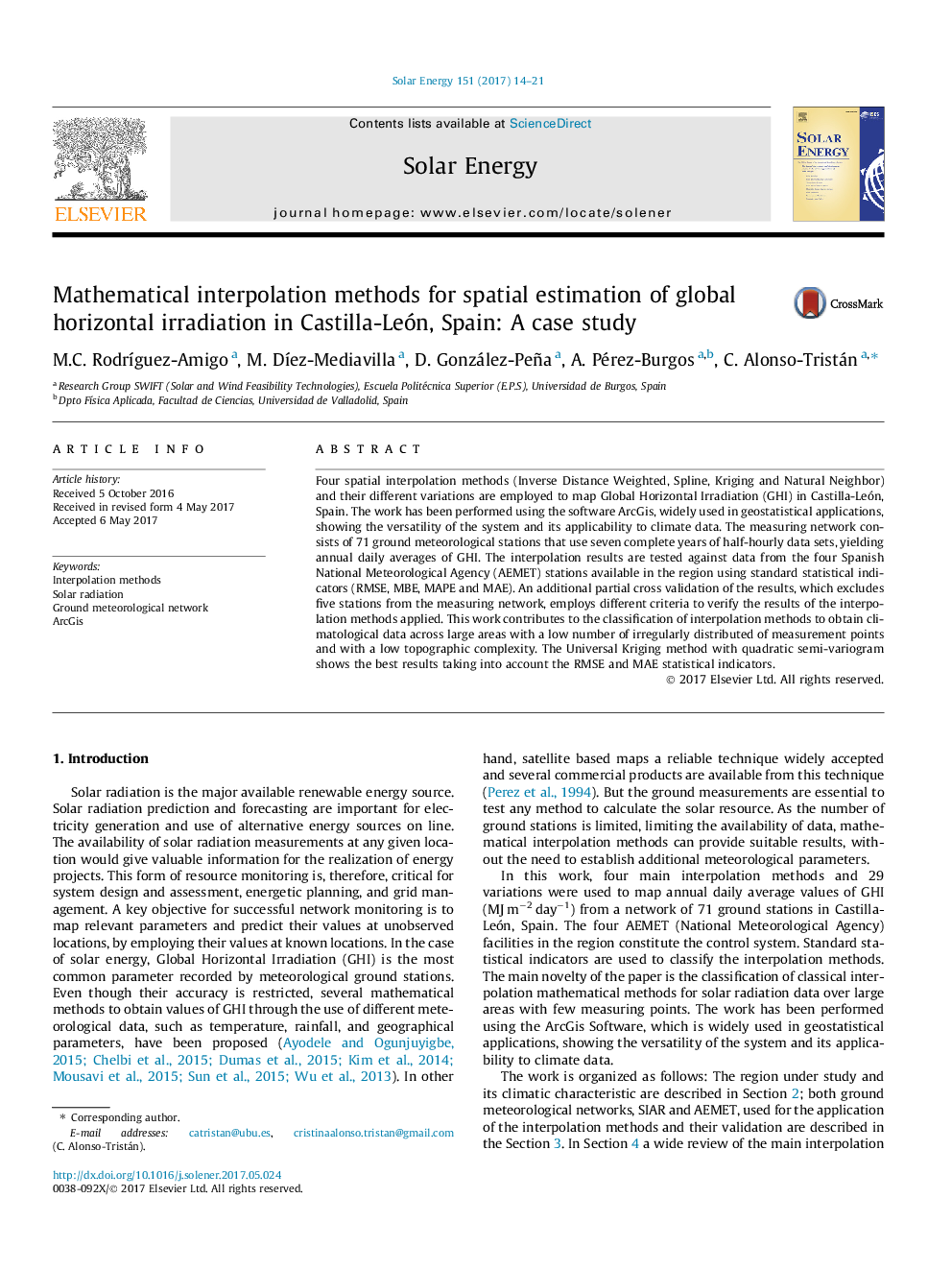| Article ID | Journal | Published Year | Pages | File Type |
|---|---|---|---|---|
| 5450953 | Solar Energy | 2017 | 8 Pages |
Abstract
Four spatial interpolation methods (Inverse Distance Weighted, Spline, Kriging and Natural Neighbor) and their different variations are employed to map Global Horizontal Irradiation (GHI) in Castilla-León, Spain. The work has been performed using the software ArcGis, widely used in geostatistical applications, showing the versatility of the system and its applicability to climate data. The measuring network consists of 71 ground meteorological stations that use seven complete years of half-hourly data sets, yielding annual daily averages of GHI. The interpolation results are tested against data from the four Spanish National Meteorological Agency (AEMET) stations available in the region using standard statistical indicators (RMSE, MBE, MAPE and MAE). An additional partial cross validation of the results, which excludes five stations from the measuring network, employs different criteria to verify the results of the interpolation methods applied. This work contributes to the classification of interpolation methods to obtain climatological data across large areas with a low number of irregularly distributed of measurement points and with a low topographic complexity. The Universal Kriging method with quadratic semi-variogram shows the best results taking into account the RMSE and MAE statistical indicators.
Related Topics
Physical Sciences and Engineering
Energy
Renewable Energy, Sustainability and the Environment
Authors
M.C. RodrÃguez-Amigo, M. DÃez-Mediavilla, D. González-Peña, A. Pérez-Burgos, C. Alonso-Tristán,
